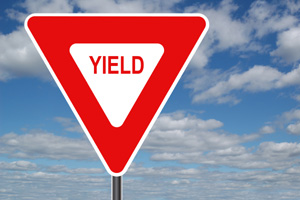
Traffic laws are meant to keep people safe and efficiently moving while using the roads. However, there can be several reasons why people who use the streets violate these laws, and failure-to-yield laws are no different. Breaching failure-to-yield laws is just as neglectful as breaking any other road rules.
If you have been in an accident and have sustained injuries and damages because someone failed to yield, car accident lawyers can help negotiate for compensation so you do not have to bear the financial responsibility on your own.
What Does Failing to Yield Mean?
Yielding the right of way means slowing or stopping while allowing motor vehicles and pedestrians to pass through before proceeding. Yield signs do not require the driver to stop as stop signs do but will enable the driver to slow down and look for oncoming traffic before merging onto a highway or entering a road. However, the law does state that if approaching traffic is passing through, you must stop, allowing the oncoming traffic to pass before entering safely onto the road.
Left-turn traffic signals and making left turns are other locations where drivers can fail to yield. Instead of a green arrow, a solid green traffic signal and a sign signify that the driver making the left turn must yield the right-of-way to approaching traffic by stopping before proceeding with the left turn. The same rules of the road apply to left turns without traffic signals.
Yielding is also mandated at crosswalks. The general rule is that when traffic-control signals are not present or operating, the motor vehicle must yield to the right-of-way of pedestrians crossing the roadway in either a marked crosswalk or an unmarked crosswalk at an intersection. An unmarked crosswalk is part of the roadway that a pedestrian’s natural progression would take them when crossing the street. These can include the lateral lines of sidewalks, curbs, shoulders, or one side of the road that continues to the opposite side of the road.
Factors That Contribute to Failing to Yield Accidents
In 2022, there were 11,938 traffic crashes in Pennsylvania, resulting in 67,012 people injured and 3,129 pedestrians struck. Everyone with a driver’s license should know when to yield. But failure happens more often than you would think and causes more destruction. Some reasons that can contribute to the negligence of not yielding include:
- Distraction
- Impatience or aggression
- A lack of awareness or inexperience
- Intoxication
- Failure to adjust to poor weather conditions
If a driver is distracted enough to take their eyes off the road and fails to see traffic signals or signs indicating they should yield, it can be one cause of a failure-to-yield accident. Some drivers may not be aware of specific rules regarding yielding in certain circumstances. Inexperienced or newly licensed drivers are more likely to cause accidents because of this.
Impatient or aggressive drivers in such a rush that they disregard traffic rules to save time can lead to accidents with other vehicles and pedestrians. Drunk drivers who are impaired are the obvious offenders of failing to yield.
Poor visibility due to weather conditions, such as heavy rain, whiteout snow conditions, or fog, can also contribute to these types of accidents. The weather may not be the cause, but the failure to slow down and take a higher level of care as conditions allow might contribute to a failure-to-yield accident.
Evidence That Will Support a Failing to Yield Claim
When a driver is involved in an accident with another vehicle in an intersection or junction of a roadway after driving past the yield sign, this is considered prima facie evidence that the driver failed to yield the right-of-way to the other vehicle. The situation when two cars collide with an obvious sign that one should have yielded is sufficient evidence to establish a fact unless refuted.
Other forms of evidence to substantiate any claims that your accident was caused by a failure to yield are citations. Suppose you were a pedestrian who was struck while in a crosswalk. A failure to yield to the right-of-way of pedestrians in a crosswalk citation may have been issued to the driver. The citation would cause the driver to pay a $50 fine. Police reports, accident reconstruction experts, and witness statements can also significantly prove that your accident was caused by the other party’s negligence when they failed to yield.
The Pennsylvania Accident Injury Attorneys at Rubin, Glickman, Steinberg & Gifford, P.C., Can Help With Your Failure-To-Yield Claim
The attorneys at Rubin, Glickman, Steinberg & Gifford, P.C., are skilled and knowledgeable regarding all motor vehicle accidents that result from traffic infractions. They know that compensation claims do not depend on the seriousness of the violation but on the severity of your injuries and damages resulting from the offense. And they have the resources to gather evidence to prove who was at fault and why they were at fault to substantiate your claim.
If you have been injured or sustained damages from a driver who failed to yield, the attorneys at RGSG will work hard to get you compensation. Reach out for a free consultation by calling us at (215) 822-7575 or completing our contact form.

Rubin, Glickman, Steinberg & Gifford P.C.
Pennsylvania Attorney's
January 21, 2024









